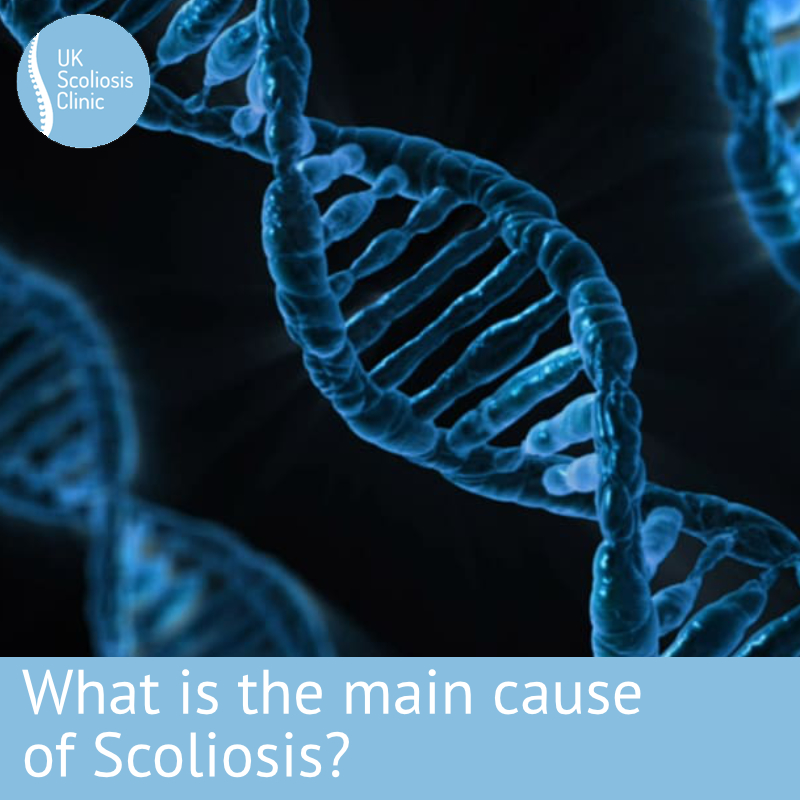
One of the most common questions which we are asked is perhaps an obvious one, “what causes scoliosis?”. While this seems a simple question, it’s actually quite a complex issue – the exact cause of many scoliosis cases is not known, although there are some factors which are known to be a risk. So today, rather than one answer, let’s look at a few.
Answer number one – “We don’t know”.
While this might seem like a shocking answer given all the modern science we are able to bring to bear on the issue, the honest answer is that science is still to determine why some people develop scoliosis, and why some people don’t. Stranger still, about 85% of all scoliosis cases fall into this “idiopathic” (meaning without known cause) group.[1]
There are a number of working theories as to factors which may predispose individuals to scoliosis – much research (and the bulk of scientific opinion at the moment) points towards genetic inheritance, but everything from vitamin and mineral deficiencies to certain types of exercise have been suggested as a potential cause. It has at least been confirmed that scoliosis certainly can run in families[2]– which is why we recommend that anyone who has a parent or sibling with scoliosis should have regular screenings
Most idiopathic scoliosis cases occur in children between the ages of 10 and 18[3] and many adult scoliosis cases (as opposed to de-novo, see below) are in fact cases which started at this age and progressed into adulthood. There are certain trends which suggest a pathology here – most cases are female, in their early teens and often come from scoliosis affected families – but alone, that information is not enough to attribute a cause. Hopefully, research will reveal the real answer in the near future!
Answer number two – “It’s ageing”
Back pain, stiffness and reduced mobility are often expected as part of the ageing process (although it certainly does not have to be this way!), so can scoliosis also be caused by age? Actually, yes it can – a specific type of scoliosis, known as “de novo” scoliosis, occurs as the spinal discs wear and tear with age. De-novo scoliosis tends to be less aggressive than teenage scoliosis, and presents a far lower risk for extreme progression – but its much more common than you might think. Recent estimates suggest that about 30% of those over 60 may be suffering from scoliosis. [4]
Answer number three – “it’s a comorbidity”.
While scoliosis is often a “standalone” condition, and this is what we tend to mean when we talk about the condition, it can also occur as a co-morbidity, that is to say, a condition which arises from the presence of another.
Some of the more common explanations are scoliosis caused by an underlying genetic or neurological condition, by a spinal issue such as a problem affecting bone growth or development or simply by injury. Some scoliosis cases can even be caused by issues with hip alignment, or by uneven leg growth. The correct treatment path in each case will depend entirely upon the underlying condition – and this is why it’s vital to see a scoliosis specialist whenever scoliosis is suspected.
I think I may have Scoliosis, What should I do?
If you think you or a loved one may have scoliosis – it’s important to seek a scoliosis specialist consultation as soon as possible. While a consultation may not be able to explain exactly why you have developed scoliosis, we are typically able to rule out other underlying conditions, leaving you with a clear diagnosis and a path to treatment.
Despite what many people say, today, it’s entirely possible to treat scoliosis without surgery – at the UK Scoliosis clinic, it’s all we do – however, the earlier scoliosis treatment is started, the better outcomes tend to be. Don’t delay, book a consultation today!
[1] ‘Adolescent Idiopathic Scoliosis: Screening, Treatment and Referral’
Gutknecht S, Lonstein J & Novacheck T 2009, A Pediatric Perspective, vol. 18, no. 4, pp. 1-6.
[2] ‘Understanding Genetic Factors in Idiopathic Scoliosis, a Complex Disease of Childhood’
Carol A Wise, Xiaochong Gao, Scott Shoemaker, Derek Gordon, and John A Herring, Curr Genomics. 2008 Mar; 9(1): 51–59. doi: 10.2174/138920208783884874
[3] ‘School Scoliosis Screening Programme – A Systematic Review’
Sabirin J, Bakri R, Buang SN, Abdullah AT & Shapie A 2010, Medical Journal of Malaysia, December issue, vol. 65, no. 4, pp. 261-7.
[4] ‘Scoliosis in adults aged forty years and older: prevalence and relationship to age, race, and gender‘
Kebaish KM, Neubauer PR, Voros GD, Khoshnevisan MA, Skolasky R, Spine 2011 Apr 20;36(9):731-6.
‘The prevalence and radiological findings in 1347 elderly patients with scoliosis‘
Hong JY, Suh SW, Modi HN, Hur CY, Song HR, Park JH., Journal of bone and joint surgery 2010 Jul;92(7):980-3





